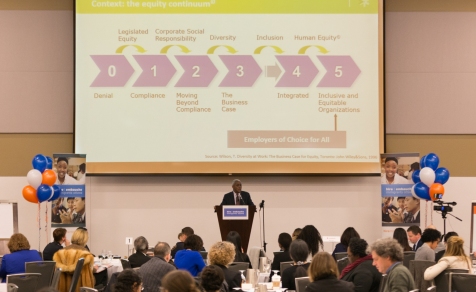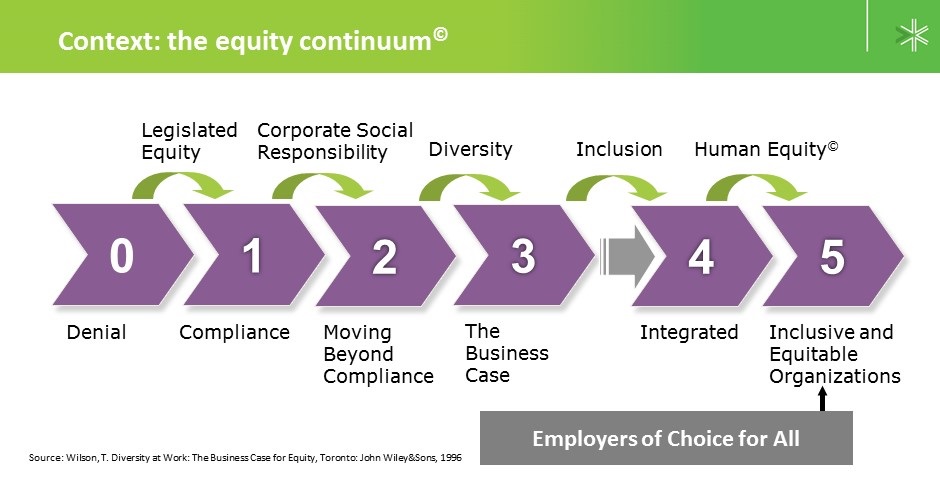
“When you treat people the same, you ignore their differences. Equity is about treating people fairly,” began Trevor Wilson, leading the Learning Exchange at the 2017 Employer Council of Champions Summit on March 7, 2017.
Moving to Canada as a child from England, Trevor told his own stories of struggling to find inclusivity. He is half Black, half Indian and had a thick British accent starting school in Canada, which he said came with challenges.
Diversity isn’t about certain groups of people, Trevor emphasized, but it’s about acknowledging any difference that could impact people being treated fairly. In an inclusive environment, people are valued because of their differences, not in spite of them.
Trevor presented conference attendees with the following exercise: You and your colleague are on a hiring taskforce to find four new employees. Based on merit, you should arrive at two female and two male hires, but you end up with four male hires. What are all the factors that could explain this result?
He describes this activity as an oil light signal — a sign that something is wrong in the way the car works. Here are some reasons why the hiring committee ended up with four males:
• Unconscious bias, appeal to hire people like you
• The pool where the job position was advertised
• Bias of the industry
• Reputation of the company or industry
• Diversity of the hiring taskforce
• Referral system, internal policy
When it comes to creating inclusive and diverse workplaces, Trevor described the Equity Continuum, introduced in his book Diversity at Work: The Business Case for Equity. It outlines five stages:

When he began this work 20 years ago, Trevor said companies were in the shift of 1-2, but now he sees encouragingly more employers shifting to stages 2-4.
ACTIVITY: Where is your organization on the Equitable Continuum? Fill out the scorecard, identify issues in your workplace environment and brainstorm potential solutions.
The inclusivity of a workplace is affected by stereotypes, which Trevor said can lead to a cycle of prejudice. This cycle begins with a stereotype (they are), which leads to a prejudice (they can’t), then discrimination (we won’t), then a reaction (they will) which then reinforces the stereotype.
Here’s an example:
Immigrants are not fluent in English.
Therefore, they can’t work as effectively or efficiently.
As such, we won’t hire them.
So, they will get a survival job that does not use their skills set.
To have an inclusive and equitable workplace, it is important to understand where employees naturally excel. To hire and retain top talent, Trevor introduced participants to the SHAPE V human equity talent model: Strengths, Heart, Attitude, Personality, Experience and Virtue. This model enables employers to better understand the intangible attributes of talent.
Here are some assessment tools recommended by Trevor:
• The Kolbe Index measures cognitive abilities and personalities.
• The Values in Action assessment identifies core characteristics.
• The Unique Ability test helps identify what people are most passionate about, while considering how much of your day to day life is spent on that.
“Inclusivity is creating a climate where diversity is valued,” said Trevor, wrapping up the workshop and encouraged participants to bring these tools and activities back to their workplaces.
Recommended Resources:
The Human Equity Advantage, by Trevor Wilson.
TED: Elizabeth Lesser – Take “the Other” to lunch
TED: Shawn Achor – The happy secret to better work
TED: Morgana Bailey – The danger of hiding who you are
TED: Dan Pink – The puzzle of motivation
Video: The Eye of the Storm
